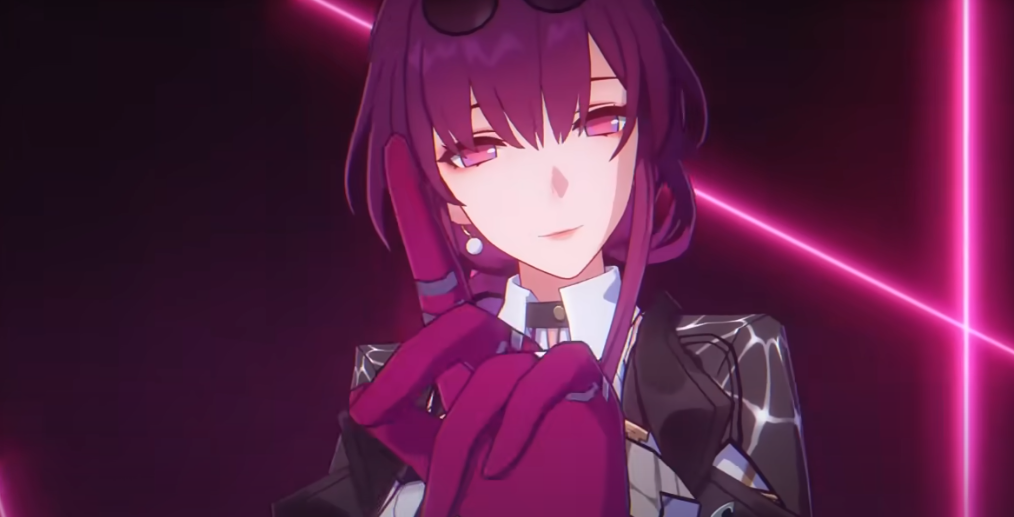Kafka is just over the horizon to shake up damage over time, or D.O.T. teams, which will certainly interest many players to get into the dot life. Whether you’ve played Star Rails since its release or are a newbie who’s getting into it just now because of Kafka, then you’ve come to the right place to learn about the essentials of dots. We’re going to cover how dots work, the difference between normal and broken dots, what affects dot damage, and some tips to keep in mind when building your dot units and teams.
How DoT Works – Burn, Bleed, Wind Shear, Shock
By learning the ins and outs of Dot, you’ll be more prepared to make your Kafka and Dot teams dominate their enemies. Let’s dive in first to start with the most basic question: how does DOT work and what counts as a DOT effect? Damage over time in Hawkeye Star Rail is damage that triggers when an enemy with a DOT debuff takes their turn. However, some effects may look like dots but are not technically categorized as DOT effects.
Right now, there are only four standard dot debuffs: shock for lightning, burn for fire, wind shear for wind, and bleed for physical. Freeze and entanglement, though they do deal delayed damage after some time, are not counted as dot effects by the game’s mechanics. Shock and burn are the most straightforward dots; they simply deal with an instance of lightning and fire damage, respectively, per turn until the effect expires. However, wind shear and bleed have additional properties. Wind shear can stack itself to multiply the damage it deals with, depending on how many stacks are on the enemy. You can see how many are currently applied by looking at enemy details. As for bleed, part of its base damage calculation relies on 8 percent of the afflicted target’s max HP. That’s why you’ll see enemies with bigger HP pools have higher damage numbers from bleed.
These are the four standard dots and their properties, but there can be certain exceptions that modify these dots. For example, the dire wolf can inflict up to 10 stacks of bleed on a unit you control, which isn’t typical of bleed. The game will likely gradually add more deity effects, so watch out for those. Moving on, there’s another important distinction we need to make between what I’ll refer to as normal dots and break dots. They have fundamental differences that you should understand to avoid potential confusion, especially about character building.
Normal DoT vs Break DoT
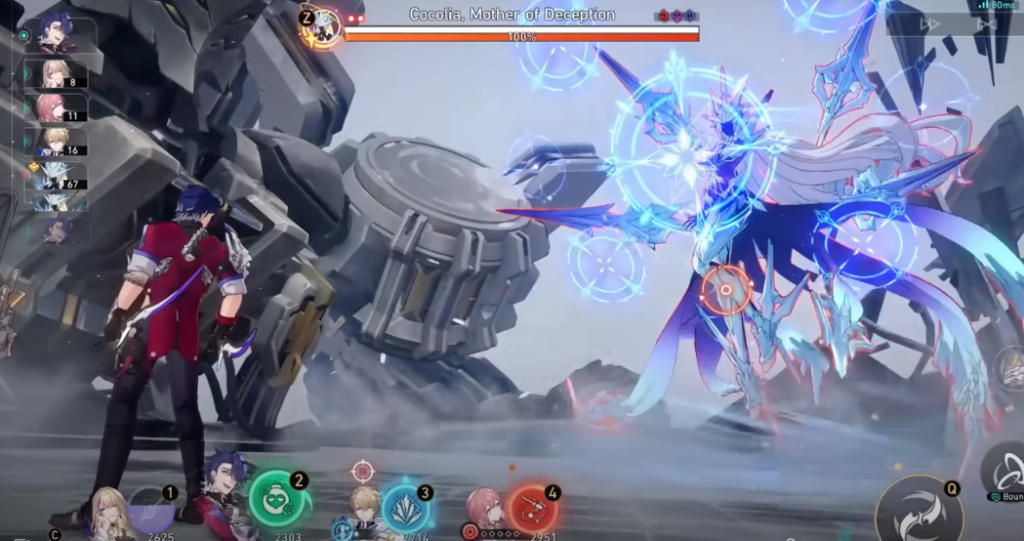
The first main difference is how they get applied to an enemy. When it comes to normal dots, some units have abilities, effects, or attacks with an inherent chance of applying a DOT of their element for a certain duration. For example, Sampo’s talent makes his attacks inflict wind shear, and he can stack it up to five times by hitting an enemy multiple times. Additionally, idols and unlockable traces can give a character more ways to apply a D.O.T. For example, Asta’s Ascension 2 ability can let her basic attack apply burn, or for Serval, when you unlock her Force Idolan, her ultimate can now apply shock to enemies. Aside from her skill, you’ll also notice certain conditions, like how Serval’s E4 specifies that her alt shock is the same as her skill. This means they’ll share the same properties, like damage multipliers and duration. If an enemy has already been shocked by her skill, her ultimate can reapply and extend the same shock, but she cannot stack two instances of that same shock effect.
There are special cases of D.O.T. sources; for instance, blessings from the Simulated Universe allow you to apply dots by fulfilling their trigger conditions. A more interesting example is the light cone trend of the universal market, wherein a preservation unit can apply burn to an enemy that hits the user, regardless of the user’s element. This has interesting implications that, as time goes by, we may likely get more gear that provides an extra source of D.O.T., which can open up more dot-based synergies.
Base Chance, EHR, Effect RES
You’ll notice that such abilities also indicate a base chance to apply the dot, which affects the likelihood that it’ll stick to the enemy. Base chance can then be affected by your character’s effect hit rate stat or EHR stat to increase the application chance. But enemies also have their effects or debuff resistance stats to reduce the application chance. These stats will be calculated together to ultimately determine the real chance of applying that dot. This is important to note because if you don’t have enough EHR, you might find your Dot application failing more often than you’d like.
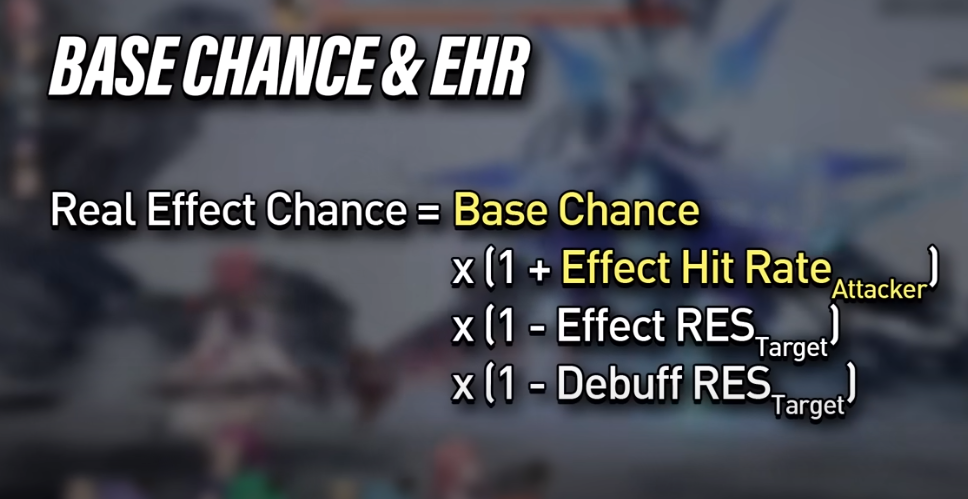
Applying a Break DoT
Thankfully, calculating how much EHR you want has a simple formula. Moving on, while normal dots can be applied by using specific abilities, a break dot can only be applied by breaking an enemy with a dot-specific element. For example, Sushang’s traces cannot apply a bleed. But if I use her to break this enemy’s physical toughness, it’ll first deal the initial break damage, and then you’ll see that there’s a bleed effect on them applied afterward. Even for non-dot units, breaking is one way they still have access to dot applications. Of course, it doesn’t necessarily mean that Sushang will be a great fit for dot teams.
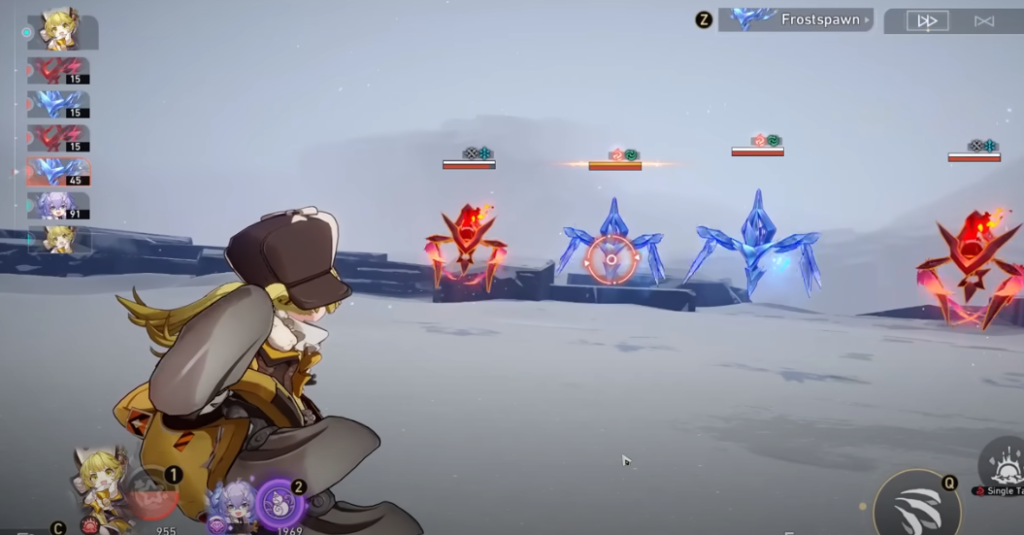
Now, what if I use Sampo, whose attacks can innately apply wind shear, to also break a wind-weak enemy at the same time? Which wind shear will apply? The answer is both. A normal dot and a break dot from the same unit can coexist with an enemy. There are now two wind shear debuffs, one from his talent and the other from the windbreak. A break dot and a normal dot of different elements can even coexist as well. If I use Serval to first apply shock to this enemy, then use Sampo’s attack to break them, then these three dots will apply. The shock from Serval, the wind shear stacks from Sampo’s talent, and the wind shear from Sampo’s weakness break.
Base DMG Calculation
Aside from how they’re applied, break and normal dot damage calculations also have fundamental differences in determining which stats are relevant. To start, the way their base damage values are determined is very different. In normal dots, the base damage multiplier typically scales with any unit’s attack, the value of which you can see in the ability description. With Sampo, his wind shear’s base damage at Talent Level 7 is 35% of his attack. However, remember that since wind shear can stack, this can reach up to a 175% multiplier at its maximum of 5 stacks. An interesting exception is, once again, the universal market light cone. Since its burn effect scales on the user’s defense stat instead, this means that while attack scaling dots are currently dominant, we’ll likely see more dots that have HP or defense scalings as well. This will be a great way to diversify team building and relic farming for DOT.
As for break dots, a unit’s attack stat becomes irrelevant, and the character’s level determines the base damage of the dot. If you’re familiar with the elemental mastery and reaction system in Genshin, this is very close to how transformative reactions work. For burn, shock, and wind shear, the higher the levels, the higher the base damage. Some special properties, though, are that a break shock has a times-two multiplier for that base damage, while a break wind shear can also apply multiple stacks. Bleed works in a slightly different way. The base damage for bleed is first calculated based on the target enemy’s max HP, with a difference if it’s an elite boss or a regular enemy. But the damage dealt is capped based on the character level multiplier and toughness multiplier of that enemy. Anyway, the result is still that a higher character level means higher bleed damage potential.
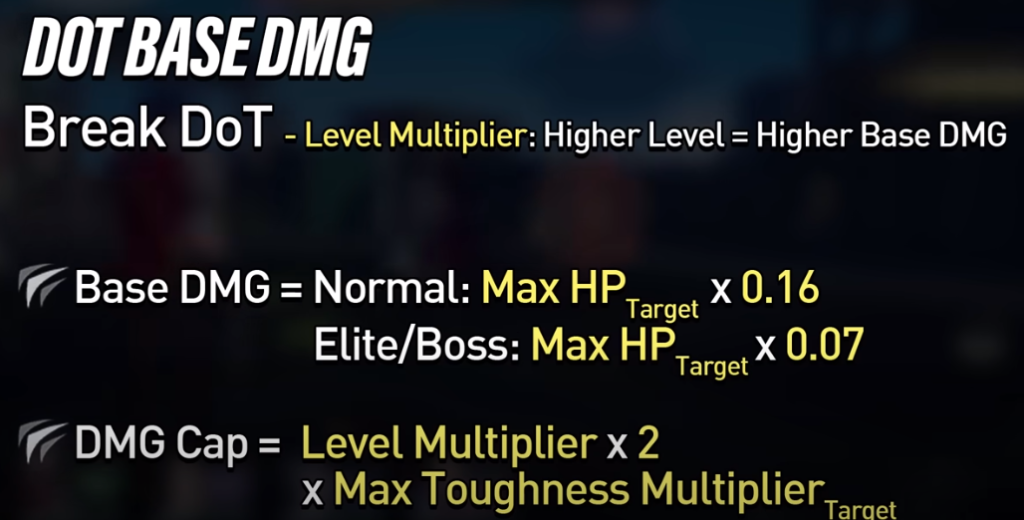
Break Effect for Break DoT
Another important difference and common source of misunderstanding is how to break effect stats and the damage boost or bonuses affect normal and break dots. The break effect stat, as the name indicates, affects dots that only come from breaking the enemy’s toughness. It does not affect normal dots applied from passives, abilities, and traces, like Sampo’s talent, wind shear, or the universal market light cone’s burn.
Let’s use this example of Serval’s shock that was applied via her skill. The left side has zero break effect, but on the right, I’ll equip a break effect link rope that has a 21.2% break effect and one roll of 21 flat attacks. When the dot ticks, there is a very minute change in the damage output due to the flat attack stat. However, this was only a normal dot and, thereby, unaffected by the break effect increase. Now, let’s use the same Serval build comparison, but this time she’s going to lightning-break this enemy to apply the shock-break dot. The damage with the 21.2% break effect is now larger, from 2630 to 3189. That’s a 21.2% increase in damage, corresponding exactly with her break effect stat.
If you’ve played Genshin, the brake effect is very much like Star Rail’s version of the elemental mastery stat. As such, the break effect will only come into play if your unit can deal the weakness break to the enemy, which is its biggest consideration as a DPS stat. It’s not always easy to control who deals with the breaking attack, and getting more of other stats can have more value than a very conditional stat. But having some break effect isn’t a bad thing either; at least when the unit does break, that’s still more damage. And if you know a specific unit can more reliably break or have ways of guaranteeing it, then the break effect will have more value.
One notable example of this is the break-effect Serval builds. What makes this particularly viable is that Serval has the ability to extend the shock duration on an enemy, which affects both break and normal dots. She only needs to break the enemy once, and then she can maintain the break dot’s uptime by continuously extending it, rather than relying on having to break the enemy again. Whether more viable break-dot units will emerge in the future is something we’ll have to wait and see.
DMG Boost for Normal DoT
As for normal dots, what affects them instead are the damage boost stat and effects, which, in turn, do not affect break dots. There are mainly three relevant damage boost types. One, the elemental damage bonus, is specific to the dot’s element, like a fire damage boost for burn. You’ll typically get this from a planar-sphere relic. Two dot-exclusive damage bonuses. For example, Sampo’s signature light cone indicates that it specifically increases dot damage. And three: universal damage bonuses. Buffs that give this effect are regular damage and dots. For example, the light cone “Good Night and Sleep Well” increases the user’s damage to debuffed enemies. But this affects both the damage from their attacks and any dots applied. It’s typically worded as “deals X percent increased damage” or “damage increases by X percent.” Either way, they mean the same thing. And these damage boosts will then be added up. So, for a dot unit, you can get these damage boosts from their planar sphere, light cone relics, and whatever ally buffs apply to help increase their damage output.
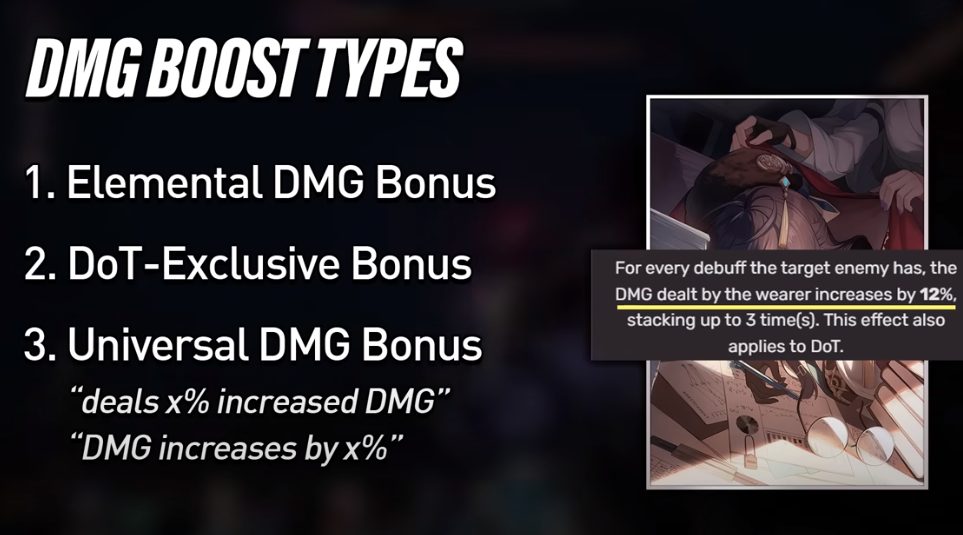
To demonstrate, here’s a quick side-by-side of Serval with and without a lightning damage boost planar sphere. You can see that with the planar sphere, the normal shock dot deals more damage. If this were tested on a weak break, there would be no change in the break shock damage. Those are the fundamental damage calculation differences between normal and break dot, which are quite important distinctions. However, they have a lot of similarities too.
DoT Cannot Crit: ATK vs Crit
First of all, unlike regular types of attacks, all forms of dot attacks cannot be critiqued. So, crit is completely irrelevant in their damage calculation. To be clear, crit stats can still help a DOT-focused unit deal more overall damage since they’ll still have attacks that can crit. But now you can sort of treat critical stats as not as important in dot teams or units compared to more conventional DPSes. For example, in a Sampo build, attacks have more overall value. It increases both his talent-applied wind shear damage and his skill’s basic and ultimate attacks’ raw damage, giving it a double purpose. Whereas crit only affects the latter type of attack and is still subject to crit RNG. However, some units may have dot capabilities but are minor compared to their other damage sources and therefore would benefit a lot from building crit stats. For example, Hook can apply burn, but her raw fire attacks are a much bigger damage source for her. So she still wants a good amount of crit for an optimal build.
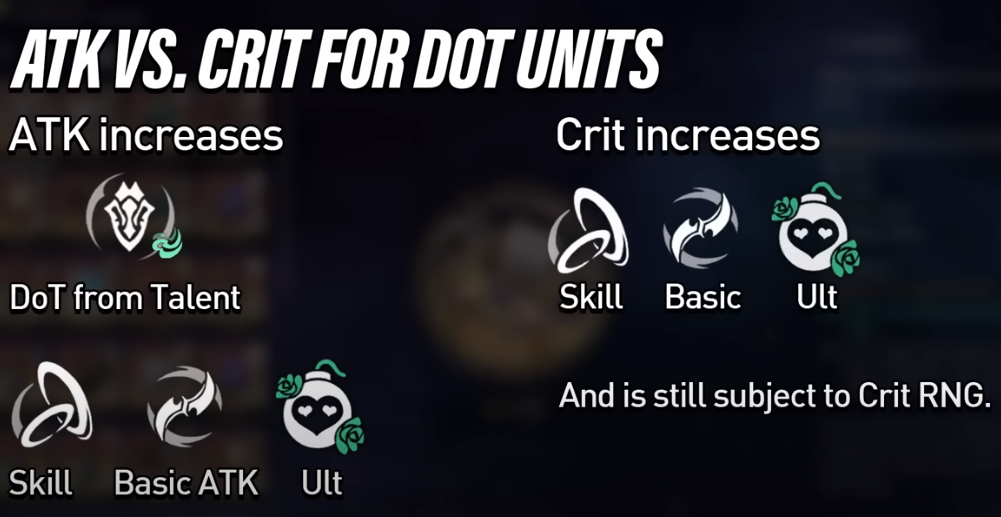
DEF / RES Reduction
Now, there are the following stats and multipliers that are included in regular damage:formulas: But since they happen to affect deities as well and are instrumental in boosting dots’ overall damage, let’s go through them too. Aside from just increasing either your attack or break effect stats, debuffing your enemy stats is an effective way to better balance these multipliers and increase your overall damage output.

To start, the enemy’s defense and damage/elemental resistance stats are also factored into calculating dot damage. By applying debuffs that reduce those stats, you will amplify both non-dot and dot damage. Such debuffs then have great value for enhancing different damage sources. Examples of defense reduction effects are A’Pella or Silver Wolf’s ultimates, and an example of elemental resistance reduction is via Silver Wolf’s skill. To demonstrate, if I compare an enemy with and without Silver Wolf’s ultimate defense shred, we’ll see that the dot on the debuffed enemy is noticeably higher. So even debuffers like Silver Wolf, who have no dot application themselves, can still be quite effective in enhancing dot teams, thanks to the damage-amplifying debuffs that they provide.
Vulnerability Effects
Enemies can also get damage vulnerability effects, which increase the damage received by a certain amount. This is not to be confused with damage boost, since damage vulnerability effects are separate multipliers. A very notable example of a dot-specific vulnerability debuff is Sampo’s ultimate. This is part of what makes him such a valuable, must-build member if you’re getting into dot teams. On the other hand, if the vulnerability debuff does not specify a type of damage, then it will universally affect damaged sources, including non-dots and dots. An example is Silver Wolf’s signature light cone. It applies an Aether code debuff, which increases the damage taken by an enemy.
Broken Multiplier and Enemy Level
Finally, there’s a broken multiplier, which increases the damage dealt if an enemy is broken. Enemies that aren’t broken receive 10 percent less damage overall, whether from damage-over-time effects or regular damage sources. As such, breaking an enemy as often as possible will help you squeeze out as much damage as possible since you can potentially keep reapplying a break debuff effect while also increasing the damage taken.
The enemy level will also have an impact on how potent your damage-over-time (DOT) is. Generally, this is because higher-level enemies will have better stats, reducing the damage you deal. To counteract this, you’ll want your units to be closer to the enemy level, have higher trait levels, and possess better-quality gear. This way, your units will have better stats and multipliers to match the enemy’s higher stats.
Conclusion
That’s pretty much the basic information you need to know about the OTS (presumably a game or system). It’s a playstyle that has a lot of room to grow, especially with the introduction of more dedicated DOT units to the character roster. Thankfully, Kafka and Luca comprise a major step in expanding the potential of DOT teams.

